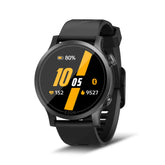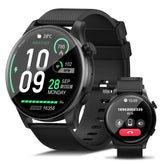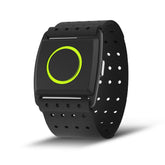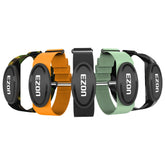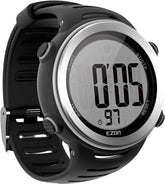Marathon Fueling Tactics: GPS Running Watches and Nutritional Timing
Finishing a marathon isn’t just about logging miles—it’s about fueling your body with the right nutrients at the right time. For runners chasing a PR or beginners tackling their first 26.2, the secret to steady energy lies in syncing nutrition with your stride. And there’s no better tool for that than a GPS running watch. These devices turn miles and minutes into a personalized fueling plan, ensuring you hit the finish line with energy to spare.
Why Nutritional Timing Matters (Especially for Beginners)
If you’re new to marathons and following a marathon training program for beginners, you’ve probably focused on building pace and mileage. But even the best training plans crumble without proper fuel. Here’s the science: your body stores roughly 2,000 calories of glycogen—its primary energy source—in muscles and the liver. A full marathon burns 2,500–3,500 calories, which means glycogen stores deplete mid-race if you don’t refuel.
That’s where nutritional timing comes in: matching carb, protein, and fluid intake to your running distance and pace. Eat too early, and you crash; wait too long, and fatigue hits hard. For beginners, nailing this timing is just as important as nailing a long run.
How GPS Running Watches Simplify Fueling
Modern GPS running watches—like those in the EZON GPS series—are built to bridge the gap between time, distance, and fuel. They don’t just track splits; they turn data into actionable cues:
- Distance-based alerts: Set your watch to ping you every 5K or 3 miles (customizable to your training plan) to sip water or tear into a gel. Beginners might start with a reminder at mile 6, then every 4 miles after that—no more guessing when to refuel.
- Pace-linked adjustments: If your watch detects you’re running faster than planned (and burning calories quicker), it can nudge you to take a gel 10 minutes earlier. It’s like having a nutrition coach right on your wrist.
- Heart rate integration: Top models, such as EZON’s heart rate series, sync real-time heart rate data with calorie burn estimates. If your heart rate spikes, the watch knows you’re exerting more energy—and may need extra fuel.
Marathon Nutrition Breakdown: What, When, and How
Let’s break down the key nutrients and how your GPS watch turns them into a winning plan:
1. Carbs: Your Primary Fuel
Carbs are your body’s go-to energy source. For marathons, stick to easy-to-digest options like energy gels, chews, or bananas.
- Pre-race: 30–60 grams of carbs 1–2 hours before the start (oatmeal, a bagel, or a banana). Use your GPS watch to set a reminder—no more rushing and skipping this critical step.
- During the race: Start fueling after mile 6–8 (full marathon) or 3–4 (half). Let your watch’s distance alerts lead the way: “Mile 8: Take gel.” Adjust based on pace: sub-4-hour runners may need 60g/hour, while slower runners can stick to 30–45g.
2. Protein: For Sustained Strength
Protein prevents muscle breakdown during long efforts. It’s not a primary fuel, but a little goes a long way.
- Mid-race: Mix 5–10g of protein into your fuel (try a protein-infused gel) after mile 16. Use your watch’s lap timer to mark this “recovery window”—especially useful if you’re following a beginner training program and building endurance.
- Post-race: Aim for 20–30g of protein within 30 minutes (think chocolate milk or a recovery shake). Many GPS watches, including EZON’s sports models, send a post-workout alert to remind you to refuel—because recovery starts the second you stop running.
3. Fluids & Electrolytes: Avoid Dehydration
Sweating depletes electrolytes (sodium, potassium), leading to cramping or fatigue. Pair fluids with electrolytes to stay balanced.
- Hydration rhythm: Sip 4–6 oz of fluid every 15–20 minutes—use your watch’s timer to stay consistent. In hot weather, this becomes even more critical; EZON’s sports watch series includes models with heat index alerts to nudge you to drink more.
- Aid station sync: Your watch tracks running distance—use it to note when you’ll hit aid stations. No more missing a water stop because you lost track of miles.
Tips for Beginners: Let Your Watch Lead the Way
If you’re new to marathons, don’t overcomplicate fueling. Let your GPS running watch simplify the process:
- Practice fueling during training runs at the same distances your watch will alert you on race day. For example, if your watch pings at mile 6, 10, and 14 during long runs, stick to that schedule on race day.
- Use your watch’s battery alert to ensure it lasts the full 26.2—nothing derails a fuel plan like a dead watch.
- Pair your watch data with a marathon nutrition app to log what works. Over time, you’ll learn exactly how your body responds to fueling at certain miles or paces.
The EZON Difference: Built for Runners, by Runners
Behind every great GPS running watch is a brand that understands the sport. EZON, founded in 2013 by a team of designers, engineers, and sports experts, builds watches that integrate hardware, software, and service—because running isn’t just about tracking time, it’s about enhancing performance. From multi-sport models that handle swimming and cycling to GPS trackers tuned for marathon pacing, EZON watches are made for runners who take fueling (and finishing) seriously.
Final Thought: Your Watch is Your Fueling Co-Pilot
Marathon fueling isn’t guesswork—it’s data. With a GPS running watch, you turn miles and minutes into a plan that works for your body. Whether you’re a beginner following a training program or a vet chasing a PR, let your watch guide the way. After all, the best finish lines are crossed with steady energy—and a watch that knows exactly when to remind you to refuel.
